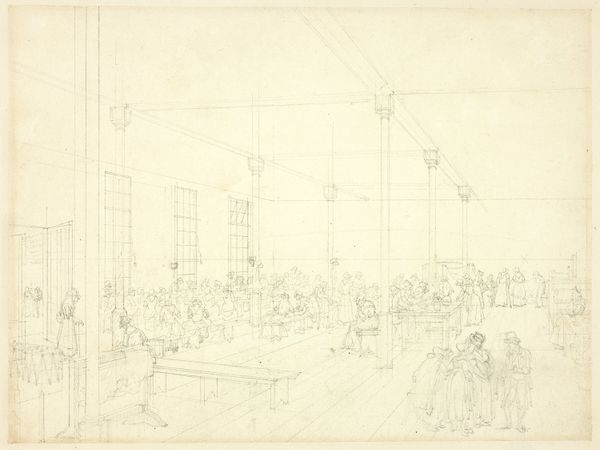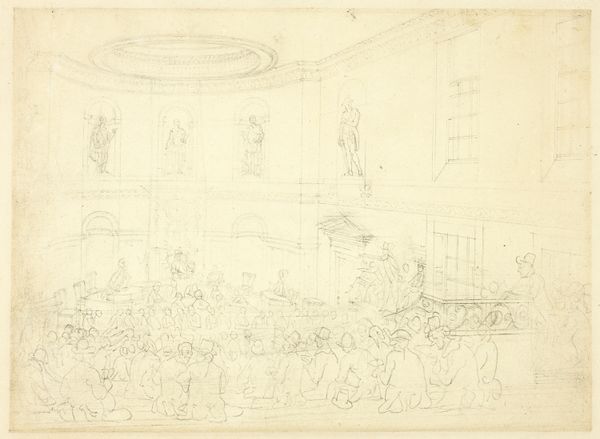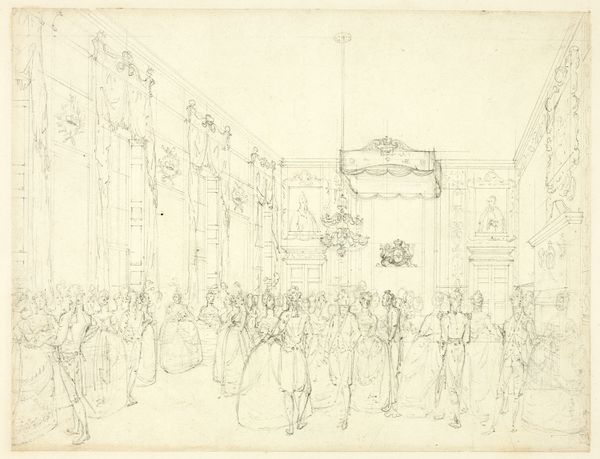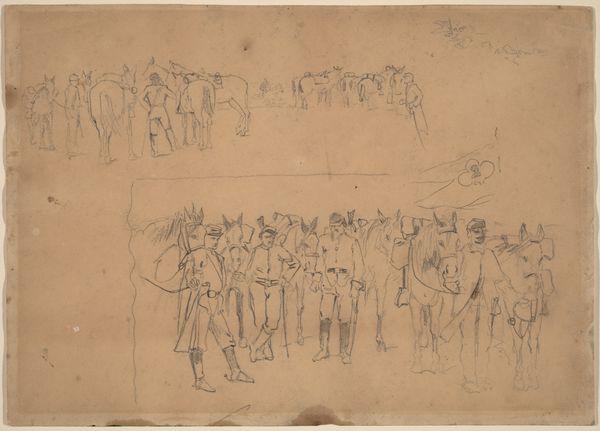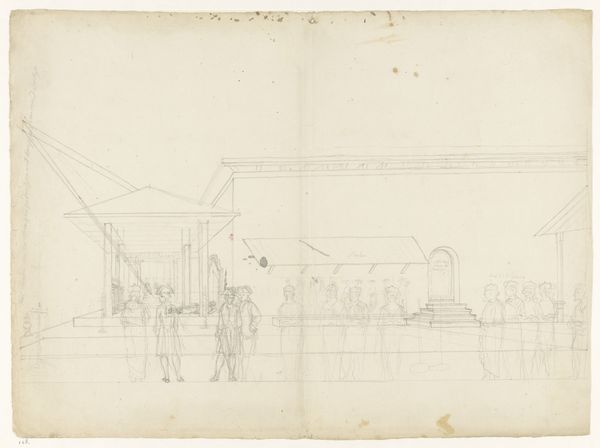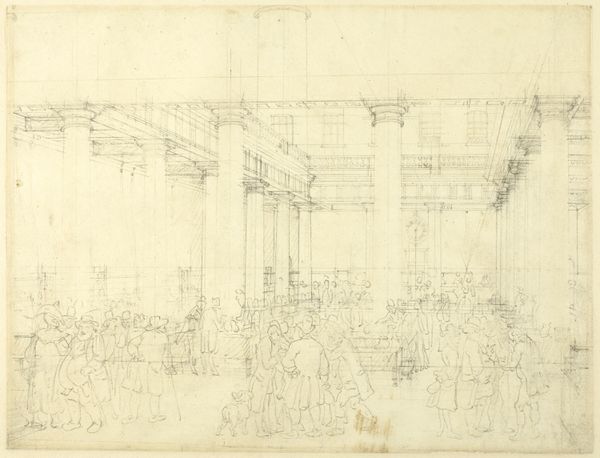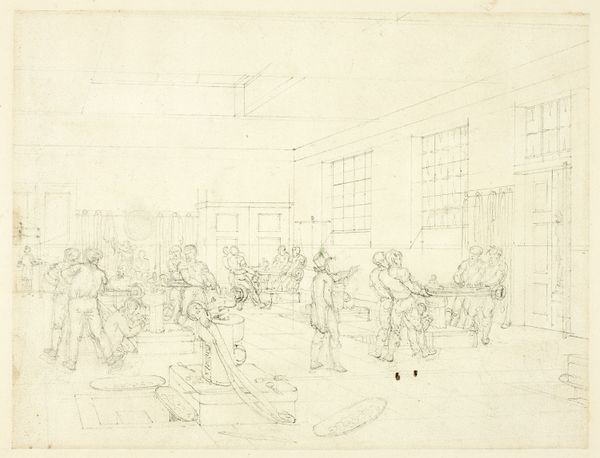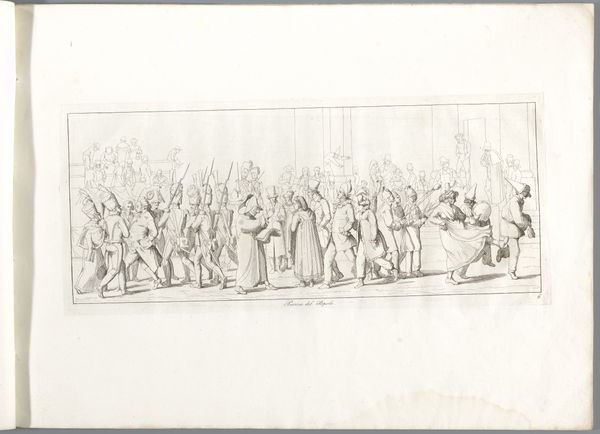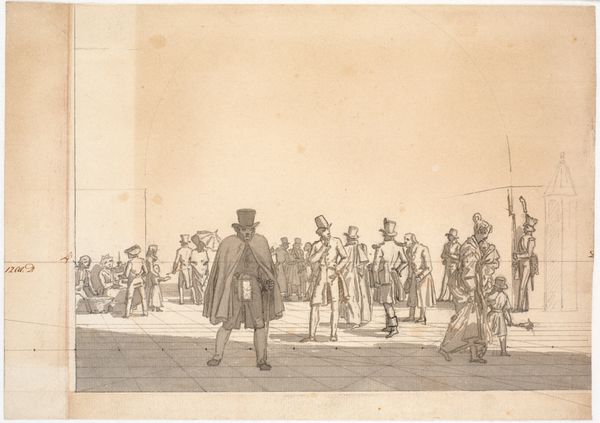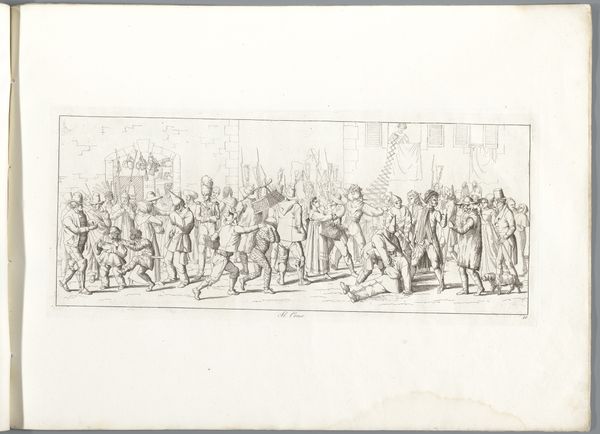
Study for Horse Armory Tower, from Microcosm of London c. 1809
0:00
0:00
drawing, print, paper, pencil
#
drawing
#
neoclacissism
#
narrative-art
# print
#
classical-realism
#
etching
#
perspective
#
paper
#
form
#
classicism
#
pencil
#
line
#
cityscape
#
genre-painting
#
history-painting
#
academic-art
#
realism
Dimensions: 196 × 265 mm
Copyright: Public Domain
Curator: This delicate drawing, titled "Study for Horse Armory Tower, from Microcosm of London," was created around 1809 by Augustus Charles Pugin. It's rendered in pencil, etching and, likely, paper. Editor: It feels unfinished, almost like a ghost of a grand procession. The perspective lines are quite striking, though, giving a real sense of depth. Curator: Exactly. As a preparatory drawing for the "Microcosm of London," it gives insight into Pugin’s artistic process and the labor required to produce the elaborate prints within the series. Consider the volume of these types of prints needed at the time and how such a process reflects London’s economic priorities in representing itself. Editor: I agree, understanding the labour here helps unveil its deeper meaning. It represents the structures of power—the Tower of London, not just as a building, but as a symbol of royal authority and control during a time of empire and social stratification. Who benefitted from that "microcosm" and who was excluded or subjugated? Curator: Furthermore, the classical realism on display and the linear approach are quite interesting, given its academic focus. This prefigures Victorian sensibilities and reveals London's obsession with the neoclassical project more generally. The medium reinforces the message: etching being, essentially, an industrial, easily repeatable and distributable means of producing an artwork. Editor: It also prompts us to examine whose histories are documented and celebrated through these grand narratives. Consider how depictions of wealth and power are often inextricably linked to the exploitation of both human and natural resources, elements crucial to its material form. Curator: Indeed, and this study offers an unusual glimpse into the crafting of those visual arguments. Thinking about how the artist prepares and edits tells us a great deal about the finished artwork, once released into public life. Editor: Absolutely. Viewing the drawing today, we must not only admire the technical skill, but critically question its representation of social order and inequality and recognize those marginalized voices in such depictions. Curator: That’s a wonderfully holistic point of view that accounts for process and cultural capital. It goes to show just how multifaceted an apparently simple sketch can be. Editor: Precisely, and this analysis only enhances the art, enriches the art historical view and brings forward the complex dialogues inherent in these historical materials.
Comments
No comments
Be the first to comment and join the conversation on the ultimate creative platform.
